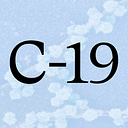A Fortunate Mistake Results in More Positive Vaccine News
Results reported today from the AstraZeneca vaccine are a little confusing, but ultimately a good thing
There’s more good news today on the coronavirus vaccine front: this morning, AstraZeneca released preliminary data showing that its vaccine, produced in collaboration with Oxford University, is up to 90% effective at preventing Covid-19.
Many experts are particularly excited about these latest results because the AstraZeneca vaccine can be produced much easier and cheaper than some of the other vaccine candidates. It can also be stored in standard refrigerators for months, as opposed to the Pfizer and Moderna vaccines, which require sub-freezing temperatures. These benefits make it a more appealing and feasible drug to be delivered to rural areas and developing countries.
But by the afternoon, confusion had emerged around how the clinical trial results were obtained. AstraZeneca released information on two different dosing regimens that had very different efficacy rates. One regimen, which was 90% effective, involved giving a half dose of the vaccine first, followed by a full dose one month later. The other regimen involved giving a full dose both times and was only 62% effective at preventing coronavirus infections.
Many scientists wondered about the rationale behind the two different doses, and, perplexingly, the half-dose regimen didn’t show up in any of the study protocols published before the trial started. That’s because it was a mistake.
First reported by the British publication The Sun in June, it turns out that some of the clinical trial participants in the UK — a total of 2,741 people — were accidentally given only a half dose of the vaccine initially. When the scientists discovered their error, they decided to carry on with the trial as planned, and the other 8,895 people in the study from the UK and Brazil were given the two full doses. When AstraZeneca conducted their interim analysis based on these 11,636 people, they discovered that the initial lower dose was actually better at preventing Covid-19.
Angela Rasmussen, PhD, a virologist and affiliate of the Georgetown Center for Global Health Science and Security, hypothesizes that the lower dose regimen was more effective than the higher dose because of the way the vaccine is delivered. The AstraZeneca vaccine uses what’s called a vector virus approach, where a different virus — in this case a chimpanzee adenovirus — is modified to deliver a protein from the target virus, SARS-CoV-2, into the body. The chimpanzee virus is harmless to humans, but it does trigger an immune response, with the goal being the development of antibodies to the SARS-CoV-2 protein.
“Viral vector vaccines are thought to work well because they do have a viral infection associated with them, so your body will respond to that and potentially have more robust immune responses,” Rasmussen explains. “But the downside to that, especially with adenovirus vector vaccines, is that you could develop immunity against the adenovirus vector that’s being used to deliver the protein. And in this case, that could be what happened.”
It’s possible that the initial higher dose of the vaccine resulted in too strong of an immune response to the adenovirus vector. When the second dose of the vaccine was given, the immune system could have jumped into action and eradicated the adenovirus before it had a chance to express the SARS-CoV-2 spike protein. Consequently, the immune system would only have been educated on the SARS-CoV-2 protein once, not twice, and so a response to the coronavirus, if encountered in real life, would be weaker and not offer as much protection.
“For adenovirus vector vaccines, this is a long-time problem with them,” says Rasmussen.
The initial half dose may have accidentally gotten around this problem by not stimulating the immune system as much in response to the adenovirus the first time around, so the coronavirus protein could be expressed and trigger a full immune response after both doses.
The fact that the positive results were due to a fortunate mistake doesn’t negate the potential benefits of the vaccine. Plenty of scientific discoveries are because of happy accidents; that’s one of the beautiful, serendipitous aspects of science. But it is crucial, especially with a vaccine development process fraught with distrust, that scientists be transparent about their mistakes and why certain decisions were made.
“The moral of the story,” Rasmussen says, “should be that vaccine manufacturers really need to be more transparent about how they’re reporting data and how they came to get that data to report.”

